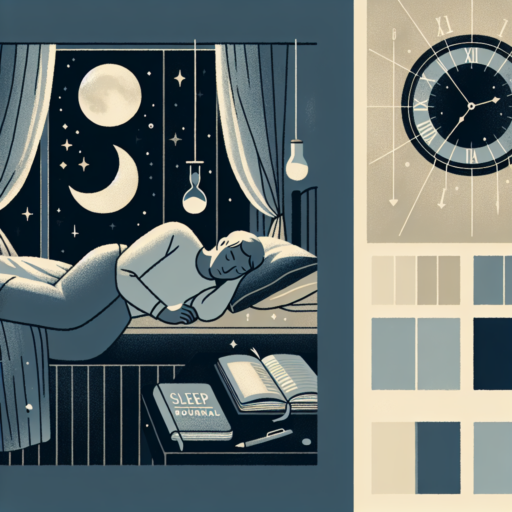Can you track your REM sleep?
Tracking Rapid Eye Movement (REM) sleep, a crucial phase of our sleep cycle associated with dreaming and memory processing, is a common concern for many aiming to improve their sleep quality. Fortunately, with the advancement of technology, monitoring this vital sleep stage has become accessible for everyone. But, how accurate and feasible is it to track your REM sleep at home?
Methods for Tracking REM Sleep
The most traditional method of tracking REM sleep involves polysomnography, a study conducted in sleep labs under the supervision of professionals. However, this is not the only method available today. Wearable technology, like smartwatches and fitness trackers, have introduced a convenient and efficient way to monitor sleep patterns, including REM sleep, right from your wrist. These devices use sensors to track movement and heart rate variability to estimate different sleep stages, offering insights into your nightly rest pattern.
The Role of Mobile Apps in Sleep Tracking
In addition to wearables, numerous mobile apps claim to track REM sleep by using the phone’s accelerometer to detect movement during sleep. While the accuracy of these apps can vary, they offer a non-invasive and inexpensive option for those curious about their sleep patterns. It’s important, however, to select apps that have been validated by sleep specialists to ensure reliable results.
Ultimately, while several tools and devices promise to track REM sleep, it’s essential to understand their limitations and use them as part of a broader approach to improving sleep health. Whether it’s through a wearable device, a mobile app, or professional sleep studies, monitoring REM sleep can provide valuable insights, aiding in the quest for a better night’s rest.
No se han encontrado productos.
How accurate are REM sleep trackers?
The question of REM sleep tracker accuracy has garnered considerable attention, as REM sleep plays a crucial role in our overall health and wellbeing. Various gadgets claim to track this vital sleep stage, but their accuracy can vary significantly. Understanding the technology behind these devices is key to evaluating their effectiveness.
Understanding REM Sleep Tracking Technology
Most REM sleep trackers utilize a combination of motion detection (actigraphy) and heart rate monitoring to estimate when you’re in the REM stage of sleep. Actigraphy assumes that minimal movement indicates deeper sleep stages, including REM, whereas heart rate patterns help to refine these estimates. While this method can offer a ballpark figure of your sleep cycles, it’s important to note that not all REM periods involve complete physical stillness, leading to potential inaccuracies.
Furthermore, the precision of REM sleep identification can be influenced by the individual characteristics of the user. Factors such as age, sleep disorders, and even the position in which one sleeps can affect the tracker’s accuracy. Professional sleep studies, which include polysomnography, remain the gold standard for measuring REM sleep. These studies use multiple data points, including brain wave activity, to provide a comprehensive view of sleep stages, something current wearables cannot match.
How can REM sleep be measured?
Measuring REM (Rapid Eye Movement) sleep, a critical sleep phase known for its importance in emotional regulation and memory consolidation, involves various methods that experts use to get accurate readings. These techniques span from professional sleep studies to accessible home devices, offering insights into our sleep patterns.
Polysomnography (PSG)
One of the most reliable methods for measuring REM sleep is Polysomnography (PSG), a comprehensive sleep study conducted in a lab setting. PSG tracks several body functions during sleep, including brain (EEG) activities, eye movements, heart rate, and muscle activities, to precisely identify the duration and intensity of REM cycles.
Home Sleep Tests
Advancements in technology have enabled the use of home sleep tests that focus on assessing REM sleep amongst other sleep stages. Devices such as wearable sleep trackers and smart mattresses can monitor sleep patterns by measuring movements, heart rate, and breathing. While less detailed than PSG, these tools provide a convenient way to observe sleep cycles over an extended period.
In summary, the quest to measure REM sleep effectively involves a range of methodologies, from in-depth clinical evaluations like Polysomnography to more user-friendly home sleep tests. Each offers valuable insights into understanding and improving our sleep health.
Does the Apple Watch track REM sleep?
Many individuals looking to improve their sleep quality often wonder, does the Apple Watch track REM sleep? Given the pivotal role that REM sleep plays in cognitive functions and overall health, it’s a pertinent question for those keen on understanding their sleep patterns better. The Apple Watch, known for its comprehensive health tracking abilities, offers insights into various sleep stages, including REM sleep, to help users achieve a better night’s sleep.
REM, or Rapid Eye Movement sleep, is a critical sleep phase where dreams occur, and the brain processes emotions and memories. Tracking this phase can provide valuable insights into sleep quality and uncover potential sleep issues. While the Apple Watch is equipped with advanced sensors and algorithms, its capability to monitor REM sleep specifically has been a subject of interest. Apple’s approach to sleep tracking emphasizes not just the quantity but also the quality of sleep, including time spent in REM.
To utilize the REM sleep tracking feature, users must explore the Sleep app on their Apple Watch. Here, they can review their sleep stages throughout the night, including REM sleep. However, it’s important to ensure that the watch is worn correctly at night and that the health features are appropriately set up for accurate tracking. Beyond mere tracking, the Apple Watch offers recommendations and tools to help improve sleep quality, highlighting the significance of understanding and improving REM sleep duration and quality.



